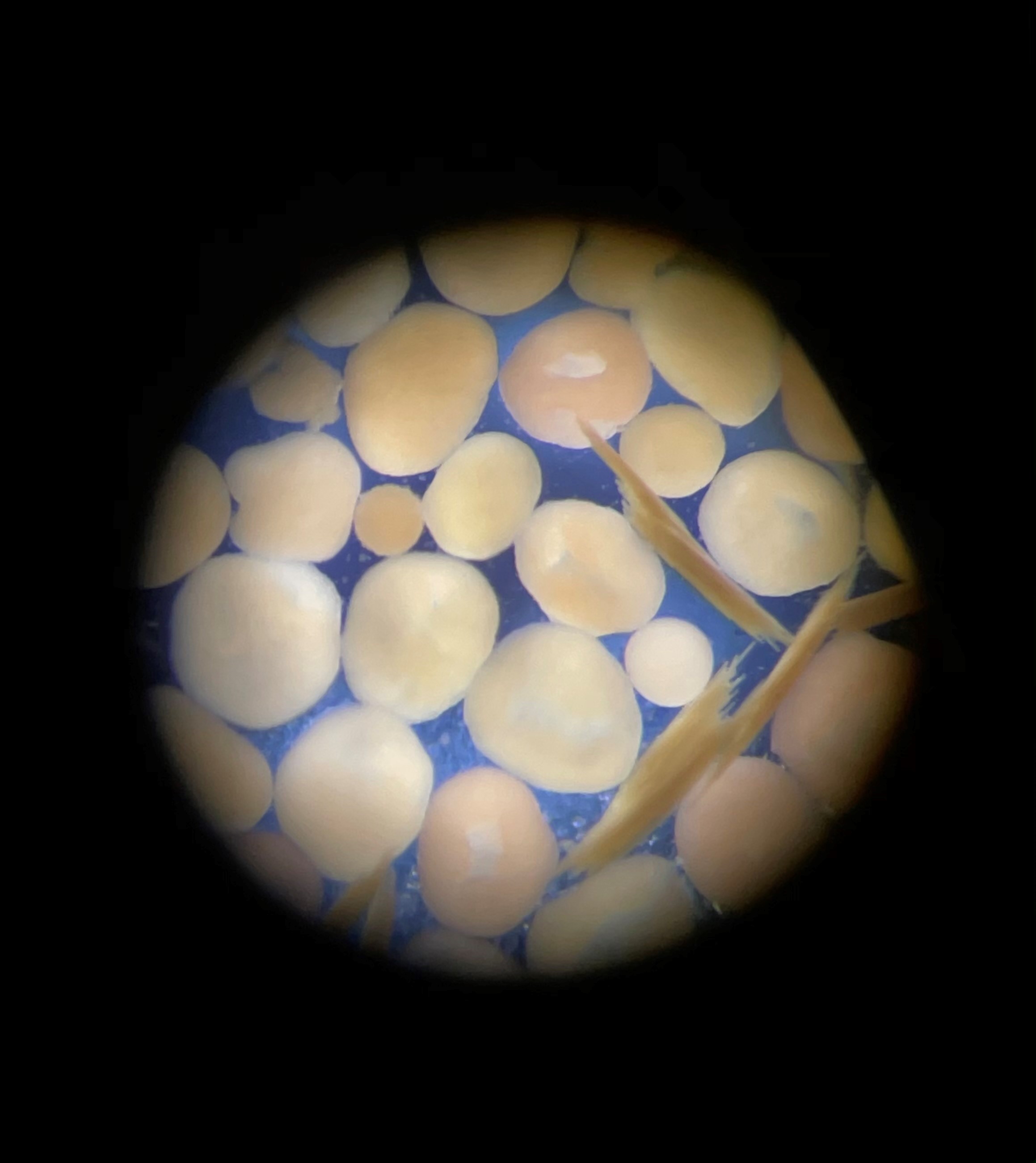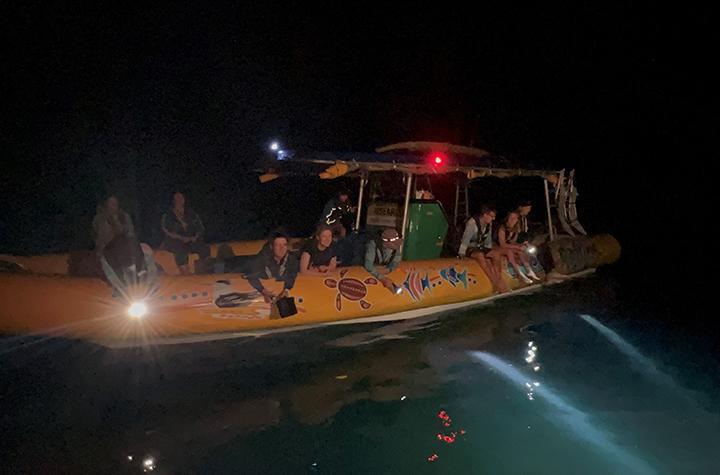Whitsundays booming with new life after best coral spawning event in years
Share
/prod01/channel_8/media/scu-dep/news/images/2022/Coral-IVF-team-at-Whitsundays-2022_credit-Peter-Harrison-low-res-720X475.jpg)
Science and tourism are proving the Great Barrier Reef’s perfect match, with Southern Cross University combining with tourism operators and US philanthropists to make the most of the Whitsundays’ bumper coral spawning.
More than 80 million corals embryos are currently being nurtured in 10 specially-designed floating nursery pools near one of the Whitsundays’ inshore reefs.
The University’s Distinguished Professor Peter Harrison said the annual mass coral spawning events on many reefs across the weekend (Nov 10 to 13) are essential for reef resilience and recovery after mass bleaching and cyclone impacts, and indicate that surviving corals are healthy and able to reproduce.

The coral larvae are growing in specially-designed rearing pools in the Whitsundays (credit Peter Harrison).
“This year my team combined resources with two partner projects, the Paul G Allen Family Foundation’s Opticorals project, as well as the Boats4Corals project partnering with Dr Mark Gibbs from the Australian Institute of Marine Science (AIMS), to maximise spawn slick collections,” Professor Harrison said.
“The fertilisation levels were high too, above 85%, so we have very efficiently collected many tens of millions of egg and sperm bundles released during the mass coral spawning, and have a very high survival of embryos and larvae, so I’m excited about the outcomes of our coral larval restoration efforts this year.”

Coral embryos under the microscope before they develop into larvae (credit Peter Harrison).
The larvae are already starting to mature and search for settlement sites after three to four days, and will be released onto degraded sections of reef around the Whitsunday Islands in the next few days.
This year’s Boats4Corals project, funded by the Great Barrier Reef Foundation’s Reef Islands Initiative, saw Red Cat Adventures, Ocean Rafting and Zig Zag Whitsundays come on board to support coral slick collection and restoration efforts.

The team from Ocean Rafting helping collect coral spawn (credit Ian Banks).

Skimming the coral spawn slick off the surface of the ocean (credit Peter Harrison).
Research and development play an important role in developing ways that the coral spawning and larval restoration process can become more efficient and accelerate reef recovery.
Vital scientific know-how about the innovative coral larval restoration technique known as Coral IVF, successfully pioneered on the Reef by Professor Harrison working with the Great Barrier Reef Foundation and the Great Barrier Reef Marine Park Authority, is being passed on to the tourism industry to put into practice in the Whitsundays.
Scientists estimate the coral survival rate is up to 100 times better through Coral IVF; improving survival from one-in-a-million coral babies in nature to about one-in-10,000 coral babies using the science-assisted Coral IVF technique.
Professor Harrison praised everyone for their ‘all hands on deck’ attitude.
“We know that we can all achieve much more working together with traditional owners and tourism operators leading spawn slick collections and transfer into Boats4Corals pools under guidance from Southern Cross Uni researchers, so it was a great example of combining resources from two projects to achieve larger outcomes,” said Professor Harrison.
A generous grant from the Paul G Allen Family Foundation, named after the late Microsoft co-founder, is supporting Professor Harrison to develop scalable solutions for his innovative coral larval restoration technique to protect coral reefs.
Media contact: Sharlene King, media office at Southern Cross University, 0429 661 349 or scumedia@scu.edu.au

/prod01/channel_8/media/scu-dep/current-students/images/Coffs-harbour_student-group_20220616_33-147kb.jpg)
/prod01/channel_8/media/scu-dep/current-students/services/counselling/images/RS21533_English-College-Student_20191210_DSC_6961-117kb.jpg)
/prod01/channel_8/media/scu-dep/study/scholarships/images/STEPHANIE-PORTO-108-2-169kb.jpg)
/prod01/channel_8/media/scu-dep/study/arts-and-humanities/images/RS20958_Chin-Yung-Pang-Andy_20190309__79I5562-960X540.jpg)
/prod01/channel_8/media/scu-dep/experience/images/SCU-INTNL-STUDY-GUIDE-280422-256-72kb.jpg)
/prod01/channel_8/media/dep-site-assets/component-library/screenshots/online-1X1.jpg)
/438x0:1563x1125/prod01/channel_8/media/scu-dep/news/images/2025/LevelUp_Pathways-video_Lismore_20210517_DSC_6694-16-251kb.jpg)
/550x0:1450x900/prod01/channel_8/media/scu-dep/news/images/2025/Betty-Oliveira.jpg)
/514x0:1487x973/prod01/channel_8/media/scu-dep/news/images/2025/Yoga-women_credit-Rui-Dias-on-Pexels-2000X973.jpg)
/514x0:1487x973/prod01/channel_8/media/scu-dep/news/images/2025/Jon-Wardle-Costa-Georgiadis-Peter-Mouatt-IMG_9557-_May-2024-2000X973.JPG)
/484x0:1516x1032/prod01/channel_8/media/scu-dep/news/images/2025/Amanda.jpg)
/514x0:1487x973/prod01/channel_8/media/scu-dep/news/images/2025/Freckles-moles-sunspots_credit-Cottonbro-on-Pexels-2000X973.jpg)
/514x0:1487x973/prod01/channel_8/media/scu-dep/news/images/2025/Books-textbooks-library_credit-Pixabay-on-Pexels-2000X973.jpg)
/250x0:1250x1000/prod01/channel_8/media/scu-dep/news/images/Todd_Thimios_Cocos_Island_Ultimate_Dive_Sites.jpg)
/514x0:1487x973/prod01/channel_8/media/scu-dep/news/images/2025/Donald-Trump_credit-Library-of-Congress-on-Unsplash-2000X973.jpg)
/511x0:1490x979/prod01/channel_8/media/scu-dep/news/images/2025/Childs-diagram-of-Lismore-floods-from-The-Floods-and-Me-project-2000X973.jpg)